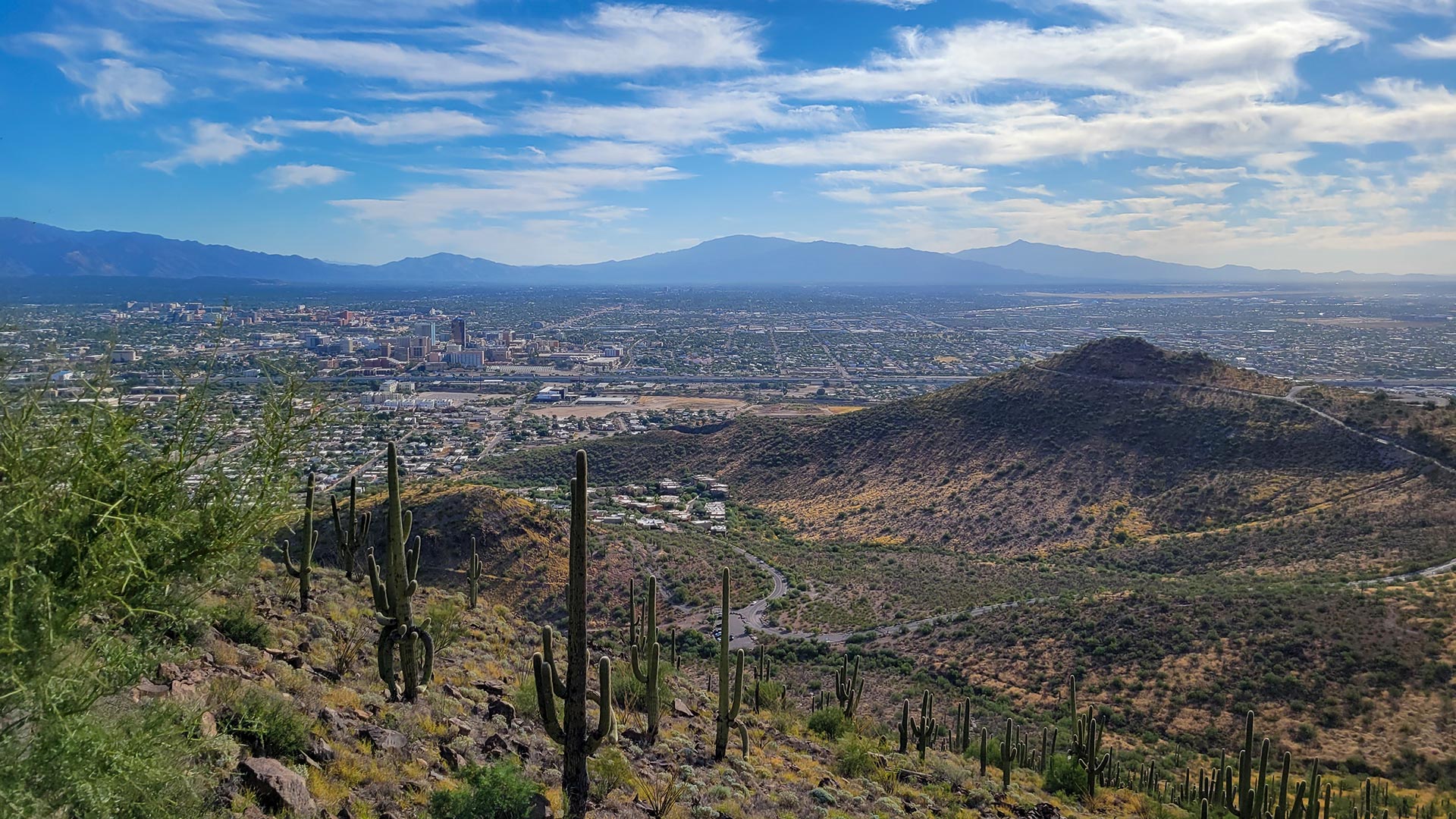 Looking east towards downtown Tucson from Tumamoc Hill. From January 2022.
Looking east towards downtown Tucson from Tumamoc Hill. From January 2022.
Experimental philosopher Jonathon Keats is taking photos of the world that we will never see. Neither will our kids, and most likely our kids’ kids will not see them, either.
Keats is placing cameras around the globe, from Tucson to Lake Tahoe to even the Austrian Alps. The simple pinhole cameras will sit for a thousand years developing a single image.
An exposure this long has never been attempted before.
The latest camera was installed on Tucson’s Tumamoc Hill in July. Light will enter the camera through a pinhole and slowly form an exposure of Tucson’s environmental change on a special pigment.
Keats says the image will document the next thousand years of Tucson history and the Sonoran Desert for future generations.
To explain what the image might look like, he asks people to imagine a decision made 300 years in the future to fill the Tucson skyline with skyscrapers, where houses used to be. In the resulting image, both houses and skyscrapers would be cast in a layered double image.
“What was there for longer, would be more bold, what was there for a shorter span would be more ghostly. What is changing constantly would be a sort of a blur,” he said.
Keats admits that the project will outlive him by hundreds of years, and there is no guarantee that the camera will succeed. But he says it doesn’t matter whether the camera sees just 100 years, 500 years, or the full millennium.
He sees the cameras as a way of communicating with the future. Keats also says getting people to understand their impact on the future can help them think critically about their behavior in the present.
“But what if it were to be the next generation watching you? What sort of paranoia might that instill? And could it actually be productive? Could it be positive?” he said.

By submitting your comments, you hereby give AZPM the right to post your comments and potentially use them in any other form of media operated by this institution.